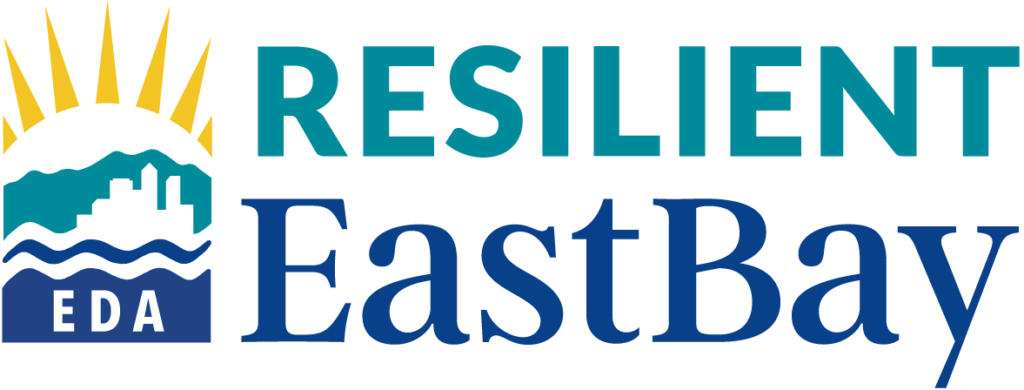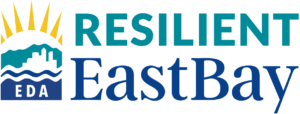Local Planning and Finance
Designating formal planning districts for industrial areas can have many benefits, such as preserving affordability for industrial businesses by protecting industrial lands, streamlining development approval processes, leveraging external funding, and making infrastructure planning and funding more efficient.

Industrial District Planning and Finance Objectives
- Long-term protection of industrial lands
- Establishing a cohesive industrial land use pattern, including addressing land use compatibility
- Establishing clear land use expectations and greater certainty for developers
- Planning and paying for infrastructure for both capital and operation and maintenance needs
- Addressing CEQA challenges and streamlining development approvals
In addition, designating industrial areas can streamline development, protect transportation nodes, direct infrastructure investments, clarify utility planning, and provide benefits for economic development marketing. East Bay communities are using industrial districts and planning tools to front load environmental review processes; complement land protections with economic development incentives; and provide financial frameworks to keep infrastructure and business amenities up to date. Deliberate planning for industrial districts can also help communities pay for necessary infrastructure investments using district-based funding mechanisms that enables their industrial economies to evolve as market conditions change.
Selecting the Right Planning and Local Finance Tools
View Detailed Planning and Local Finance Tools >
The section below provides a brief introduction to each of the tools and when or how a city might choose to implement one versus the other or in combination with each other.
Area or Specific Plans
- Cities typically rely on industrial zoning to guide land use activity in areas with industrial activity. But zoning only applies to individual parcels or projects, without providing a broader policy vision to align the industrial area with community goals and values.
- Area and specific plans are targeted land use plans for defined geographic areas that provide this additional policy vision for the area. These plans also provide guidance on acceptable uses and design standards and allow front-loading of the environmental review process for the entirety of the plan area.
- These tools are helpful for protecting industrial areas from conversion and can be used to help manage change in uses or industrial needs over time. Area plans are most useful for jurisdictions with market momentum and strong community support, and in areas where industrial uses can benefit from a designated district.
District Based Funding Mechanisms
- Cities lack funding or financing tools to pay for new or updated infrastructure. District-based funding mechanisms, such as community facilities districts or enhanced infrastructure financing districts, are some of the only mechanisms cities can deploy to address this challenge.
- These tools can help fund infrastructure investments by spreading the costs out across an entire area, rather than potentially overburdening individual development projects. These tools can create great predictability as to how much funding will be available on an annual basis.
- District-based funding tools do not directly increase development fees and can be used as a complement to area or specific plans to provide additional support for industrial investments.
- Each tool functions differently and has different political implications: enacting certain tools may require support financial support from existing businesses and/or divert funds from a City’s general fund.
Economic Development Zones
- While planning and infrastructure strategies can provide incentives for developers, these tools may not be sufficient to attract businesses to invest in a new industrial area where market demand is still building. In addition, long-term planning processes can be time consuming to implement. Designated economic development zones enable a City to provide financial incentives to businesses in target industries in a quick and flexible manner. This area-based incentive program can also provide a signal to new investors that the district as a whole will be a priority for new investment for years to come.
- This tool encourages industrial activity by focusing on business and industry attraction, rather than focusing on the development process, as emphasized by a land-use strategy such as an area plan. It also is quicker to implement and easier to adjust than a land-use strategy. Incentives can be targeted to specific industries, and the designated industries can be changed easily with simple strategy updates as market or economic conditions shift over time.
- This tool is also useful when a community is struggling to attract target industries; however, industry strategies should always be based on a community’s competitive advantages relative to other locations within the region.
Development Agreements
- Industrial districts often include large parcels with significant redevelopment potential; however, the redevelopment process may take many years to complete. This tool establishes an agreement between a local government and a property owner that specifies standards for height, size, and uses on a particular site as well as identifying anticipated roles and responsibilities to be undertaken by both parties.
- This tool can be used to streamline future development for an extended period of time, by allowing projects complying with development agreement terms to move forward with a more limited set of approvals.
View Detailed Planning and Local Finance Tools>
[1] Grodach, C. (2022). The Institutional Dynamics of Land Use Planning. Journal of the American Planning Association, 88(4), 537-549. https://doi.org/10.1080/01944363.2021.2006756
[2] Curran, W. & Hanson, S. (2005) Getting Globalized: Urban Policy and Industrial Displacement in Williamsburg, Brooklyn. Urban Geography, 26(6), 461-482. https://doi.org/10.2747/0272-3638.26.6.461


